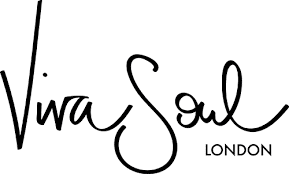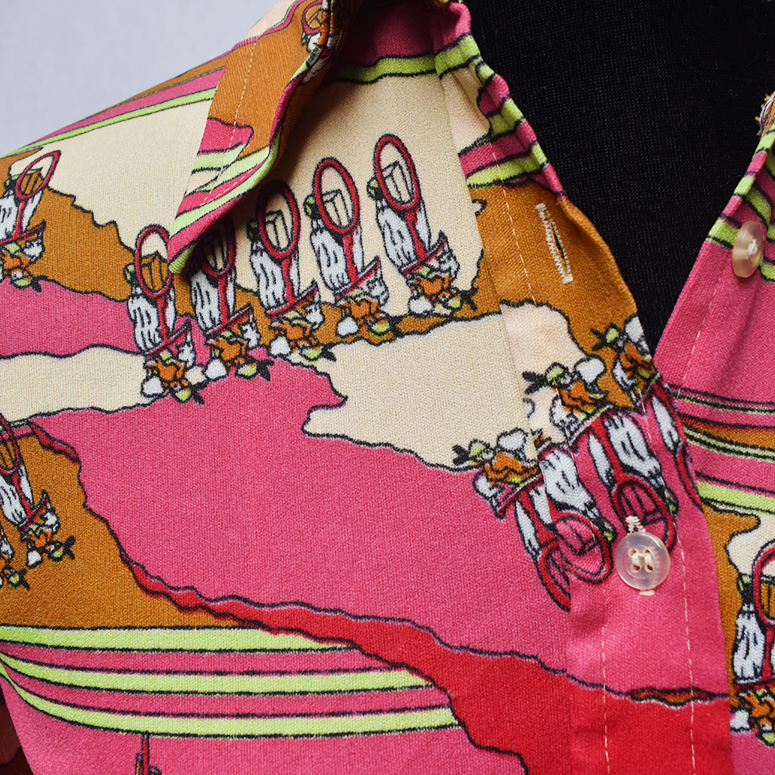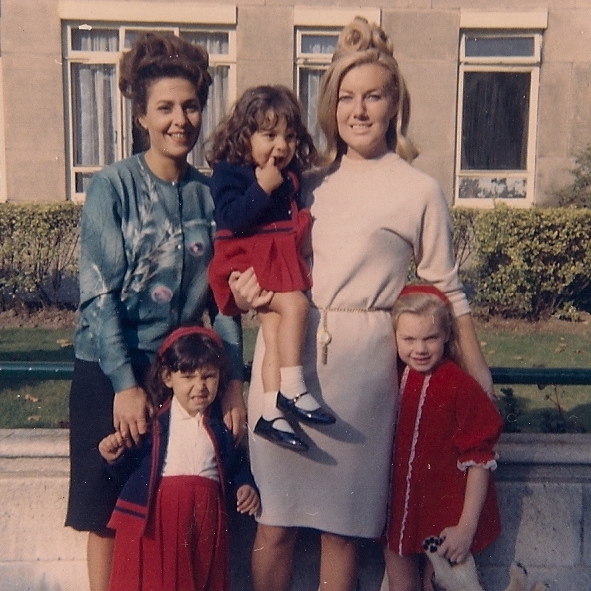To discover where my love for vintage fashion started, I guess we have to travel back to the time before – the experimental, not-always-getting-it-right years of my early teens. Although our shapes and sizes were probably around the same, I felt so very different from my classmates. We attended a non-uniform school, and whilst my friends were being sent to the teacher’s office for short skirts and suggestive t-shirt slogans, I was more likely to be found in my mum’s clothing, as we were around the same size from when I turned thirteen. Although my mum was and still is a very fashionable woman, it wasn’t exactly a wardrobe suitable for my age.
Plus Size Peg In A Not-So-Round Hole
I found a bit more fashion freedom soon after this, possibly with the introduction of male friends and (she whispers) boyfriends. There was the obligatory soft-goth stage, and I also went through a few months of wearing only red, white and black outfits probably the influence of The White Stripes. This was the early 00s, so dresses over jeans, waistcoats over t-shirts, disc belts and feather earrings all had their moment in the spotlight too. Looking back I can see that even then, I was struggling to find my place in the fashion world because my body just didn’t fit in with what was going on around me. I come from a very creative family so it was no surprise that I’d be drawn to bold colour palettes and jazzy prints that I saw on the high street, but I hated going out to find someone else wearing the exact same thing. “Topshop?” they’d say, and I’d somehow feel caught out.
At Last, My Love Has Come Along
Then, I found vintage. My early twenties coincided with attending my first vintage fairs. Living close to Chelsea, London, Frock Me Vintage Fair was my local. Quite different from how it is today, I could go in with fifty quid and come out with an abundance of original vintage items, whether it was a novelty print ’70s maxi skirt or an antique lace collar that I could play with and style up at home. I was in heaven and finally found a place for me and my fashion experiments to thrive.
Vintage has stayed in my wardrobe almost constantly since then – interestingly, the only time I steered away was when I lost a huge amount of weight. I went back to jeans and basics, probably trying to fulfil that longing to look like my peers. But even that didn’t do it for me. I was desperately miserable at a lower weight and as the pounds came back, so did my vintage pieces – and my self-esteem!
Myth Busters
As with the entire fashion industry, there’s a real stigma in the vintage world towards plus-sized people. Whereas other cultures found weight to be a sign of wealth and notoriety, particularly for men, western women are considered ironically “lesser” when they’re bigger. So, I ask you – when shopping for vintage, how many of the following have you heard? Let’s bust some myths:
“People just weren’t big back then.”
First of all, back when?! Flick through any art history book and you’ll see bottom-heavy
fertility sculptures and busty Pre-Raphaelite women flaunting their curves, these bodies admired and worshipped for centuries.
“The bigger sizes just don’t exist.”
Tell that to icons like Etta James, Big Mama Thornton (the clue is in the name, people), Mama Cass, Montserrat Caballe, to name just a few. Queen Victoria may have only been 4’11” but she had a reported waist size of 37 inches. So if anyone ever tries to tell you that there simply weren’t larger people in the past, you just show them a photograph of one of these women… wearing clothes that fit them perfectly.
“Marilyn Monroe was considered plus size!”
If no one has told you this already then trust me, it will happen. I strongly suggest you get out a tape measure and educate the speaker on how small Marilyn’s reported 23-inch waist really was. I don’t need a tape measure, actually, I’ll just show them my left thigh instead.
How Happy Can A Chubby Girl Be?
As in our modern world, it wasn’t that these bodies didn’t exist, the media just didn’t want you to see them.
When fashion labels did cater to the larger sizes, they often used alternative phrases in their marketing. Lane Bryant still produces plus-size fashion today, but if we look back to their ads from the 1950s, you’ll see headlines like “Calling all Chubbies!” or “Slenderizing Fashions for Stout Women and Misses”. One Sears ad featuring a young black girl reads “Tracy Harper may not care if fashionable chubby-sizes are hard to find – but her Mother does and so does Sears”.
Sew Fashionable
Whether they saw themselves represented in boutiques or not, plus-sized women of all eras dressed to meet the fashion trends, and sewing your own was much more commonplace than today. When you find a homemade vintage item, you’ll often see a lot of history – bits nipped and tucked, let out or let down, necklines adjusted to suit its wearer.
How many teeny vintage items have you seen in pristine condition? Probably hundreds, which leads me to question whether they were used and loved as much as those plus sizes that were probably passed down and worn to death along the way (just a bit of food for thought).
Beautiful, But Rare
So why is it, then, that we don’t have lots of larger sizes for sale? Sadly, it’s a bit of laziness or at best an oversight, as these pieces are out there – as Sears says, they’re just harder to find. It also takes more effort to make sure your business really is size-inclusive. When I hear vintage businesses say that larger items aren’t out there, I’m baffled. Here I am, a plus-size woman, wearing plus-size pieces dating all the way back to the 1930s, and you’re telling me they don’t exist?
I wouldn’t want to run a shop where I couldn’t shop for myself. My business Viva Soul London is lucky to benefit from many of my hand-me-downs, but I’ll always make sure to source a wide range of larger sizes as well as smalls and extra smalls. So next time a trader tells you that an estimated UK size 12 is “generous”, I urge you to take your generosity and custom elsewhere.
Get to Know Your Measurements
Why I find this reluctance to stock plus sizes particularly infuriating is because I know firsthand how freeing wearing original vintage can be. The numeric system in fashion sizing is nonsensical. From one high street shop to another you won’t find consistencies in all their size 14s. In one shop I can be a Medium, in another a 4XL. Don’t waste your time trying to make sense of vintage size labels either. I’ve got an item in stock at the moment that’s a size 18 1/2 and one that’s a size W! Who knows what scale of measurement those businesses were using.
The best and most reliable way of shopping for vintage is to grab your tape measure and get to know your measurements. You’ll no longer be constrained by a size bracket and instead, you can just own your own numbers!
Feed the Fat Vintage Rebellion
Embracing the fact that we are all different is the best and most effective way to rebel against a world that considers fat bodies to be “wrong”. Here’s my advice for how vintage businesses can help, if they aren’t doing so already:
One Size does NOT fit all: Whether it’s a kaftan or full skirt, if your item has a maximum width, list it. Don’t assume someone’s size or shape, and also don’t automatically picture your customer as someone smaller. If an item is an extra-large size, list it as that, not as an “oversized” small. And please, never mark something as maternity unless the label states it.
Put your customers before your items: I’ve heard and witnessed the horror stories too many times – traders telling customers to put something back on a rail because it won’t fit them and they might damage the item. Talk to your customer – find out what they’re looking for, and what they find works and doesn’t work for them. By assuming someone is going to be negligent with your items, you’ll lose out on potential business and most likely taint someone’s experience of how wonderful vintage fashion can be.
If you can be anything, be kind: If you aren’t plus size, put yourself in their plus size shoes. I often think of a woman who came into my Pop-Up shop with her teenage daughter. As the daughter jumped around picking up items to try on, her mother sat quietly. “Would you like to try anything on yourself?” I said to her, but she instantly replied “Oh, you won’t have anything to fit me in here”. From her expression I sensed a familiar feeling – a history of wading through rails of small items, feeling more and more insignificant and invisible with every hanger that passed. I showed her some of the pieces I had in stock that I thought would look great on her, and although she didn’t try any of them on, I hope I helped to change her mind about how original vintage really can be for everyone.
Some Very Good Places To Start
Slowly, the tides are changing. Instagram accounts like @historicalfatpeople share photographs of plus-size people from the past, shedding much-needed light on their existence. Virtual fairs like @ahead_of_the_curve_vvf invite traders to sell items in sizes UK 16 and upwards, and reproduction vintage brands and becoming more inclusive too (with items that are actually shaped to larger bodies, rather than just small sizes with a few extra inches added on). We can all do our bit to make the vintage world a safer and more accepting place for big people – no matter your shape or size, there is room for everyone!
For more talk on plus size vintage, tune in to my podcast, where I’ll be joined by my great friend Jo Smyth, a.k.a. Banana Orange Vintage.
Published on The Vintage Woman Magazine blog



